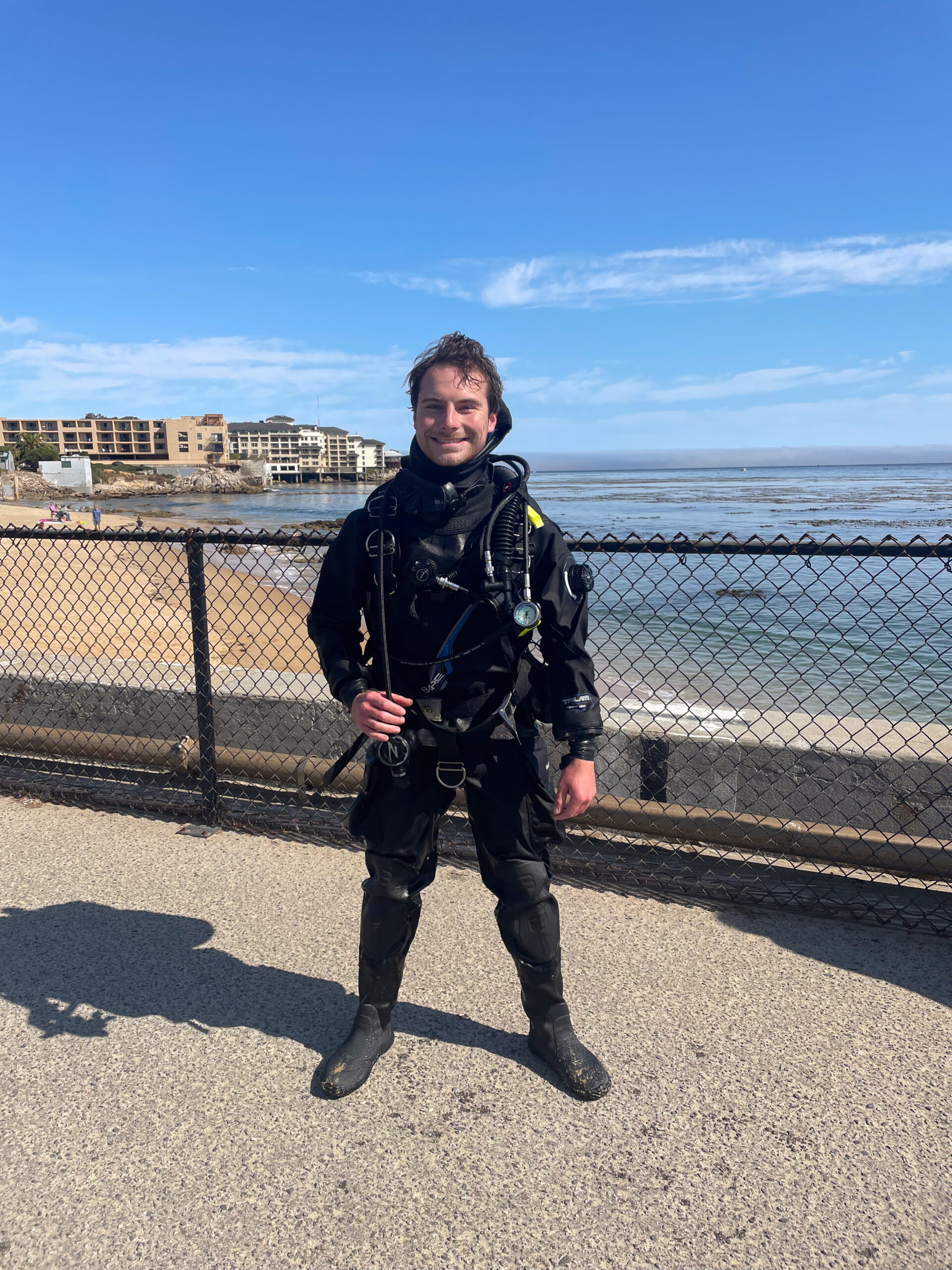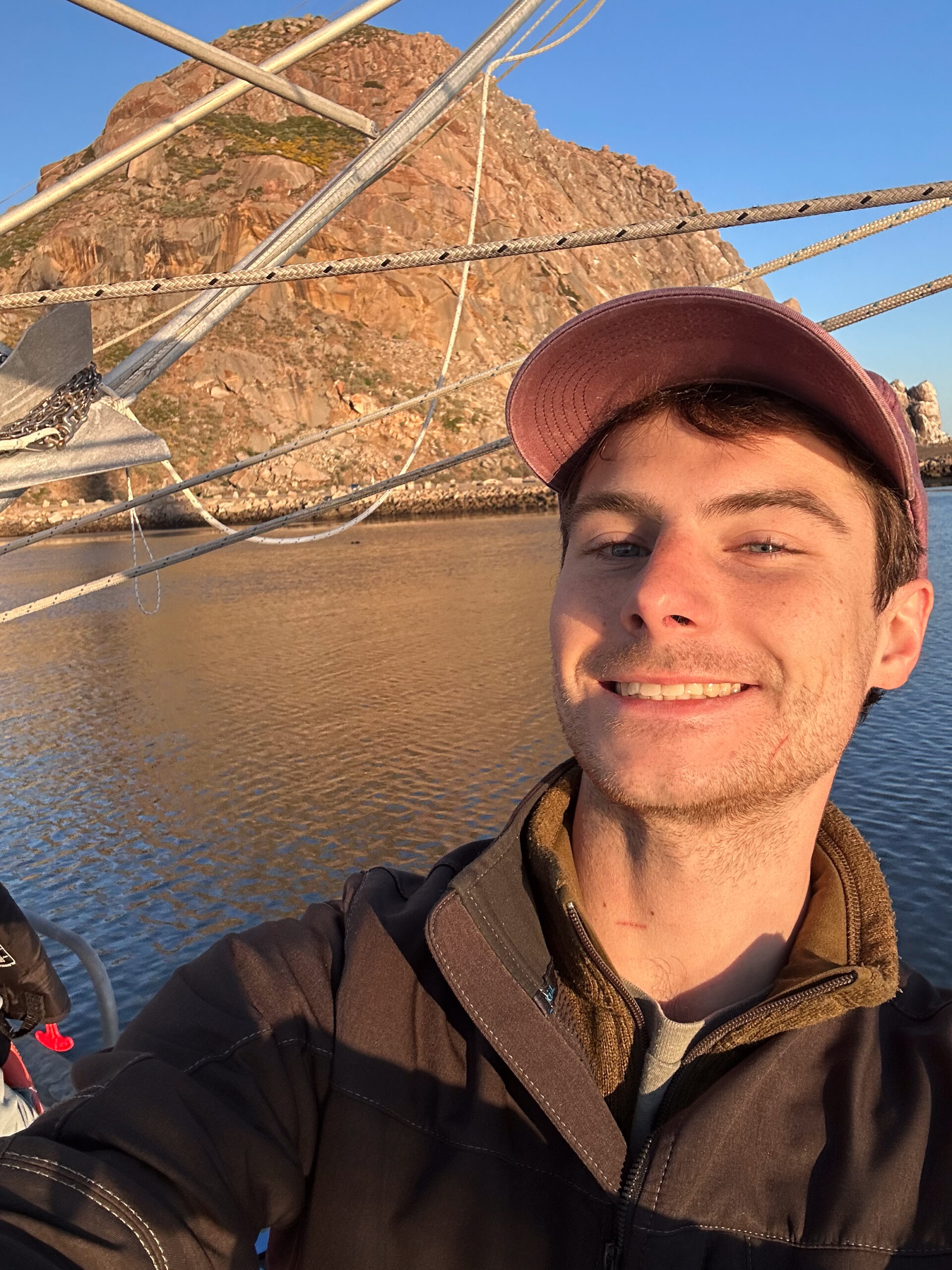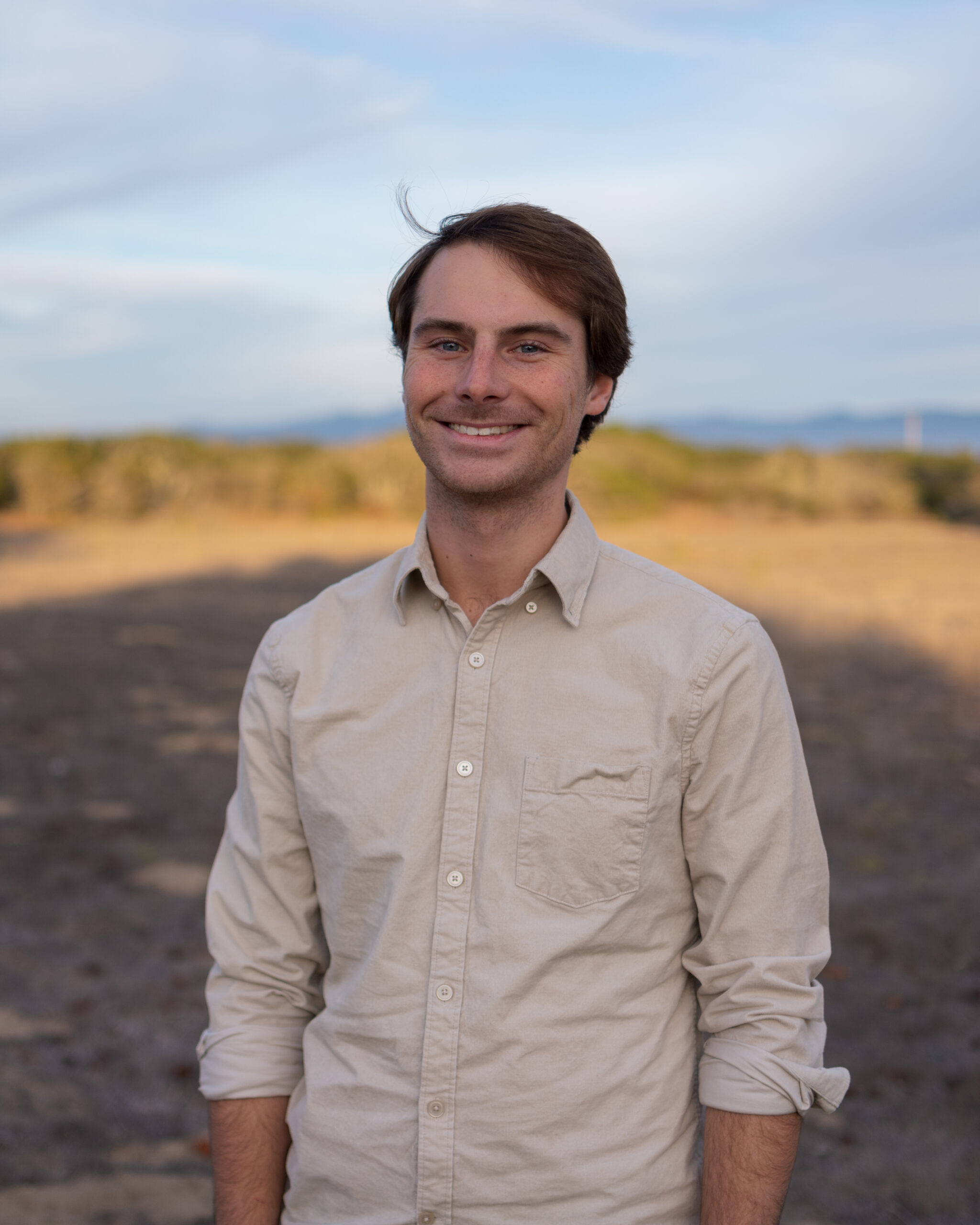"Habitat-mediated efficacy of 360 degree diver-operated video for quantitative surveys of California reef fishes"
A Thesis Defense by Kameron Strickland
Zoom | Live-Stream | November 13th, 2023 at 3:00 pm PDT
Abstract
Temperate rocky reefs feature a mosaic of complex macrohabitat features which host a variety of demersal fish species. Giant kelp forests add considerable vertical structure to rocky reefs, including macrohabitats extending from the reef to the upper water column. Much of what we know about temperate communities derives from shallow SCUBA surveys in which divers record observations using underwater visual census (UVC) techniques. Increasingly, these communities are being studied with video techniques first utilized in deeper water. While UVC provides immediate data on fish communities and requires no additional technology either for data collection or post-processing, imagery captures the fine-scale associations between fish specific habitat features that elude UVC techniques. While traditional video cameras constrain the field of view available to a UVC diver, 360˚ cameras record everything in all directions, eliminating the need to selectively survey one direction underwater. However, questions remain as to how data derived from 360˚ video transects compare to the more well-established UVC transects, particularly in complex environments. My primary research objective was to examine the trade-offs associated with 360˚ video and UVC when quantifying attributes of the demersal fish community across multiple sites and macrohabitat types. I performed SCUBA dives at four sites around the Monterey Peninsula in central California. Pairing UVC and 360˚ video, I recorded fish counts along 30 meter demersal transects. Richness, diversity, abundance, and density of fishes from UVC and 360˚ video were compared statistically with two-way analysis of variance (ANOVA) and non-metric multidimensional scaling (NMDS). Results indicate that within fish-habitat guilds, counts of species were similar between methods at all macrohabitats and most sites. 360˚ video and UVC produced similar results with respect to species richness and diversity. Differences between the methods arose by looking at density at any scale, as well as total count per meter of all fishes. These results suggest that with some caveats, 360˚ video transects can be incorporated into temperate subtidal reef monitoring without compromising data quality.
Bio
Kameron graduated with his B.S. in Marine Science from CSU Monterey Bay in 2019. There, he was heavily involved in the SCUBA program, both volunteering for courses and diving for his personal capstone project. Early discussion of Kameron's thesis project was already in progress when he joined the Ichthyology lab in 2020. After learning to create 360˚ video SCUBA dives, Kameron wanted to put the technology through trials and see how 360˚ video transects surveyed kelp forest fish compared to SCUBA divers. During his time at MLML Kameron performed video analysis for the Fisheries and Conservation Biology Lab's BOSS video lander project at San Clemente Island, became a SCUBA Instructor, started a marine consulting job, and even worked as a long-term substitute teacher across multiple grade levels. In his free time, Kameron enjoys wildlife photography and can be found taking cameras precariously close to seawater.

Kameron immediately after finishing his first drysuit dive in Monterey



